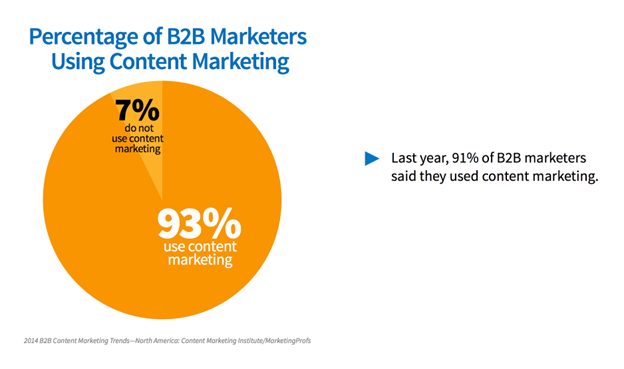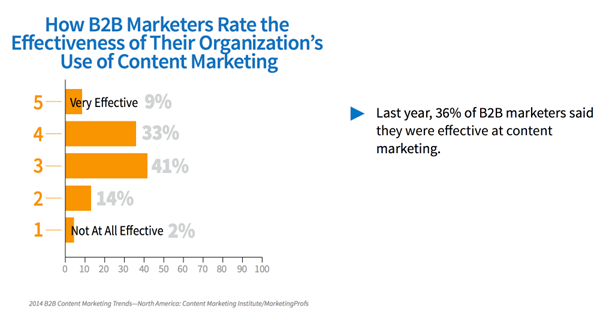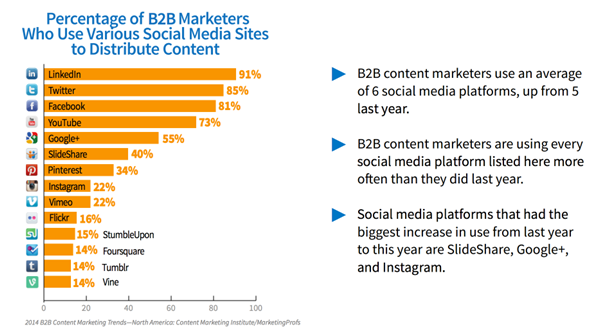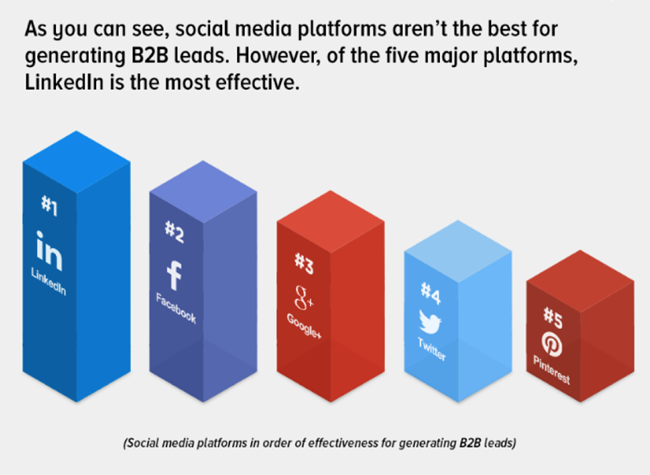A lot of B2Bs are terrible at social media. But in today’s social media-saturated environment, B2Bs can’t afford to stink.
For some reason, B2B companies have lagged behind B2Cs in both the adoption of social media and using it effectively. Here are five tips that will help any B2B pull out of the social media doldrums and gain more traffic.
1. Figure out an unboring angle.
A lot of B2Bs are boring. At least they think they’re boring to the uninitiated. Their self-perception as a boring company becomes a self-fulfilling prophecy. Because they think they are boring, they act boring. They write boring articles. Their social media posts are boring.
I think that every company can be unboring — even the most “boring” B2B.
Let’s talk about an example B2B. They sell large vivarium misting systems to zoos, animal theme parks, and research universities.
That sounds pretty boring. What the heck is a vivarium misting system?
This is where the B2B needs to get creative.
A vivarium misting system helps reptiles to survive in an environment that is different from their native environment. It’s going to help pythons thrive in a research environment so scientists can understand them. Do you see the unboring angle emerging?
There may not be a lot of people interested in vivarium misting systems, but there are a lot of people interested in pythons or rainforest preservation, etc.
Each B2B with an unintelligible product or service needs to develop an angle that is both understandable and appealing to a broader audience. This will allow them to create an initiative or idea that can gain traction on social media.
Let’s say a B2B sells repair services for vibratory leaching systems in mines. There aren’t many people who are going to tweet about vibratory leaching systems in mines. But there are people who are interested in mine reclamation or increasing mine safety. There’s the unboring angle.
You can find an unboring angle. Once you do, you’re ready to roll forward with your social media efforts.
2. Feature a real person.
One of the major shortcomings of many B2Bs, especially in the industrial and manufacturing sectors, is the lack of a genuine human backing their efforts.
The lack of real people makes the B2B company seem so distant and unreal. It’s like talking to a robot. It just doesn’t feel right.
Every B2B needs to make an intense effort to humanize the brand on social media and content marketing. Here’s what this looks like:
- Using first-person voice when writing updates and article
- Using a brand front person to tweet, post updates, and write articles
- Using real people with their names in customer service
- Initiating engagement and outreach from a real person
3. Hire the right person.
B2Bs are often challenged in social media because they don’t hire the right person to manage their social media efforts.
Here’s how this plays out from a negative angle.
B2Bs try to hire someone who’s experienced in their niche, not someone who is an expert at social media.
I think it’s important that anyone who’s leading a social media initiative needs familiarity with the industry. But B2Bs also need someone who is a social media ninja. Why? Because B2B social media is a hard nut to crack. It’s not inherently sexy or awesome. It doesn’t automatically generate buzz. It takes a social media expert to really unleash the hidden power in B2B social media.
B2Bs often hire someone to do social media functions rather than to create a social media movement.
Social media is not just about posting Twitter updates twice a day or updating a Facebook status once a day. That’s a shortsighted and myopic view of social media.
Social media is about much more. Many B2Bs, unaware of the deeper complexity of social media, are looking only for someone to update their status or create a Facebook page or whatever. That’s not going to cut it.
Instead the company needs someone who can develop a movement on social media, shaping the brand’s voice and expanding their reach. It’s not just status updates. It’s an entire identity creation.
B2Bs don’t know how to engage a following that is directly related to their niche.
Many B2Bs go astray on social media, thinking that they need to find all the followers who are interested in their niche — automated vivarium misting systems!
Unfortunately, there might only be two people on Twitter who are interested in vivarium misting systems.
That’s why the B2B company needs to develop something broader and more exciting. The social following does not need to be directly related to or even interested in the niche. They can be indirectly related via the unboring angle.
B2Bs engage social media with the objective of leads first, rather than brand awareness.
If the first objective of social media is leads, then things have gotten off on the wrong foot. Leads don’t come first. Engagement and presence come first. Leads are a byproduct. This goes back to the “unboring angle” I mentioned above. If a B2B can develop their unboring angle, they will be better able to use social media effectively. The ultimate objective of most social media efforts is leads, but that doesn’t mean that gaining leads should come first of all. First, the company should aim for presence. Leads will follow.
Here are a few tips to help a B2B hire the right person for social media:
- Hire an expert in social media. Look for someone that has social media success in a similar niche, but not necessarily in your own niche.
- Hire a social media consulting company or agency, not just an individual. Companies often have more resources at their disposal. For a lower price, they can help you engage on a lot more levels, like creating social media graphics, writing content, etc.
4. Back your social media with your content marketing.
There is no such thing as a successful social media campaign without a successful content marketing campaign. They’re like two links in an indestructible chain.
Gratefully, most B2B are already doing content marketing, according to the Content Marketing Institute.
However, not every B2B uses the same type of content marketing.
I’m convinced that the better a B2B company is at content marketing, the better they will become at social media.
This article is not the place to discuss the ins and outs of B2B content marketing. Instead, I’ll point out that the company should find the most engaging form of content, and share it on social media.
5. Use LinkedIn
B2B marketers love LinkedIn; 97% of B2B companies are using it.
There’s a reason for this: LinkedIn is effective at securing leads.
The social goal of most B2Bs isn’t just traffic. It’s the right kind of traffic. More specifically, it’s leads from that traffic. That’s why LinkedIn has been the social media sweet spot of most B2Bs.
LinkedIn does for B2Bs what Facebook, Twitter, and Pinterest have all failed to do. It forms professional connections based on a single goal.
It’s not that Facebook, Twitter, and all the rest are more personal and less professional than LinkedIn. LinkedIn brands itself as a professional networking site. On LinkedIn, you see fewer baby pictures, fewer cat videos, and nothing about “Dave just checked in at Downtown Bar.”
LinkedIn, devoid as it is from issues like “relationship status” and “favorite TV shows” is much more appealing to the world of B2B exchanges.
Conclusion
In the next few years, I predict that we’re going to see more and more B2B markets become really good at social media. Already, there are a few bright spots in the B2B social horizon.
By advancing these five tips, you can take your social media efforts to the next level.
What techniques do you use with B2Bs increase your traffic on social media?




Comments (17)